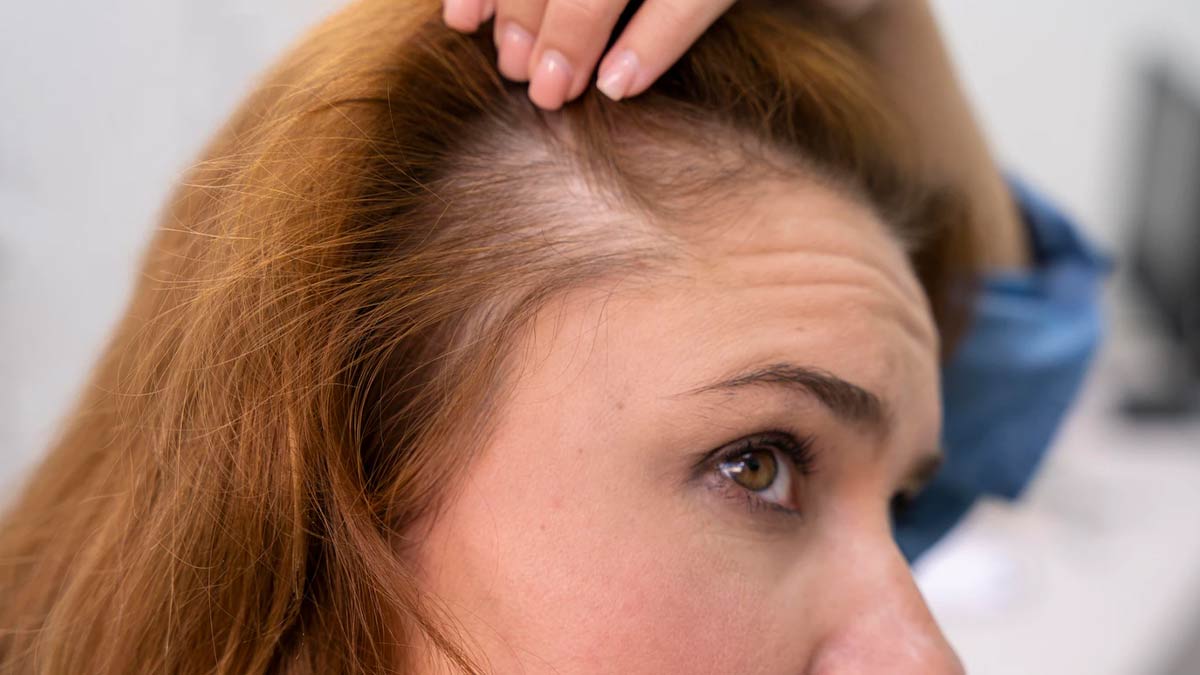
Female pattern baldness or androgenetic alopecia is a common type of hair loss that is caused due to ageing, hormones, and genetics. It is normal for women to experience hair fall, but bald patches that cause thinning or no hair growth can be a problem. In the case of men, there is a receding hairline and bald spots that happen with age, however, it is different in the case of women. It begins with gradual thinning at the part line, followed by growing diffuse hair loss that radiates from the head's crown. As hair follicles get smaller, the hair that grows becomes finer and thinner.
Causes Of Female Pattern Baldness

Female pattern baldness is primarily hereditary. The hair-growing period for women is genetically short, and the time between shedding and growth is relatively long. You may also experience hair thinning or smaller hair follicles due to your genes. In addition, stress, ageing, changes in hormones, heavy blood loss during menstruation and iron deficiency anaemia can also lead to this type of baldness in women.
Also Read: Oxygen Laser Therapy For Hair: Know How And Why Is It Beneficial In Controlling Hair Loss
Symptoms
- The most affected areas of the scalp are the top and crown. Typically, it begins with widening the centre part of the hair, known as the Christmas tree pattern.
- Except for regular recession, which occurs to everyone over time, the front hairline is unaffected.
- You may lose hair in circular or patchy bald spots on the scalp. You may experience itchiness or dryness on your scalp before hair loss.
- There can be a sudden loosening of your hair. You might lose a few handfuls of hair when brushing, washing, or even with a little tugging.
Types Of Female Pattern Baldness
Female pattern baldness is divided into three types which are as follows:
Type 1: In this type of baldness, thinning of your hair starts around the part.
Type 2: This type witnesses the widening of the part and causes thinning around it.
Type 3: This includes diffuse thinning and causes a see-through area at the top of your scalp.
Treatment

Minoxidil
It is a drug that has been approved by the Food and Drug Administration for treatment. It is available in different formulae, i.e. 2% and 5% and can be applied to your scalp twice a day. Even though it won't completely replace the hair you've lost, it can grow back a lot of hair and make your hair look thicker overall. However, this drug has certain side effects, including redness, itching, dryness, and hair growth in unwanted areas.
Spironolactone
Spironolactone(Aldactone) is a blood pressure medication that prevents androgen production and results in hair regrowth. It can result in many side effects, such as fatigue, tender breasts, and irregular menstruation.
Iron Supplements
Your doctor will give you iron supplements if you have iron deficiency or heavy blood flow during periods.
Also Read: Losing Hair Life Never Before? These 4 Hair Loss Treatments Can Help
Diagnosis
You can visit your doctor or dermatologist for a diagnosis. Your doctor will examine your scalp and check the hair loss pattern. Your diagnosis will be based on your medical history and ruling out other hair loss conditions such as iron deficiency or thyroid.
Bottomline
You should visit your doctor if you notice sudden hair loss as it can indicate an underlying disease, such as overproduction of androgen or androgen-secreting tumours on the ovary, pituitary, or adrenal gland.







